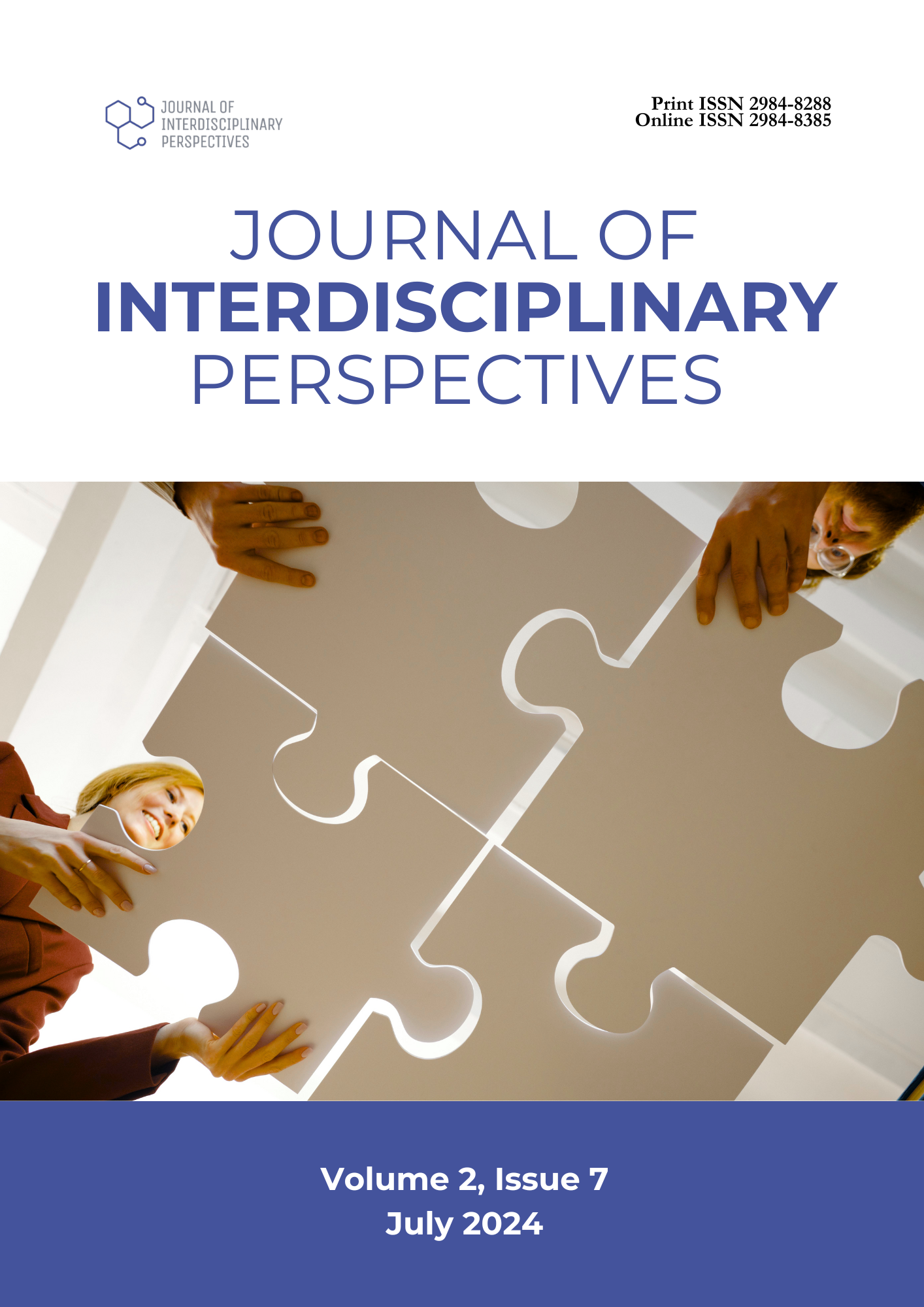Describing the Use of Freedom Wall in Expressing Students’ Emotion
DOI:
https://doi.org/10.69569/jip.2024.0112Keywords:
Freedom wall, Students’ emotion, Emotion expression, Use of freedom wall, ExpressionAbstract
This study looked into the use of a freedom wall for students' emotional expression. An explanatory sequential mixed-methods research design was used. The study included 30 Grade 11 HUMSS students from a school in Misamis Oriental. A validated survey instrument was used to collect information on students' demographics and opinions. The Freedom Wall's emotional benefits and challenges were investigated using focus group discussions. The results showed that it was a useful venue for expressive arts, thoughts and quotes, emotional expression, and interactive discussions. Students believed that the freedom wall had a favorable impact on their emotional expression and creativity. Thematic analysis indicated three major emotional benefits: emotional relief, confession of feelings, and starting a conversation. Students' perceptions of the Freedom Wall's use were not significantly different when classified by age; nevertheless, gender variations were observed. Female students are more likely to express their feelings openly, which aligns with prior research on gender and emotional expression. Challenges to its use were discovered, including issues about location and privacy, as well as the requirement for physical maintenance. The study indicated that the freedom wall is important for offering emotional release, serving as a confession wall, and initiating student participation. The study shed light on the Freedom Wall's emotional benefits and problems, giving to a better understanding of its role in encouraging emotional expression in schools.
Downloads
References
A Comparative Study of Self-expression and Catharsis in Theory of Mystical Journey at Manṭiq-uṭ-Ṭayr (Conference of the Birds) and Biodanza. (2019).https://doi.org/10.17758/eirai5.f0619421
Barnes, J. (2021, June 30). The value of safe spaces in the free speech movement - Students For Liberty. Students for Liberty. https://studentsforliberty.org/blog/value-of-safe-spaces-in-the-free-speech-movement/
Corey, Julianne, "Interoception and Expressive Writing in Expressive Arts Therapies: A Trauma-informed Approach – Literature Review" (2022). Expressive Therapies Capstone Theses.411.https://digitalcommons.lesley.edu/expressive_theses/411
Dekin, S. (2021, May 25). Men and Emotions: The Importance of Becoming Vulnerable. Mission Harbor Behavioral Health. https://sbtreatment.com/blog/men-and-emotions-the-importance-of-becoming-vulnerable/
Diggory, T. (2021, January 22). Benefits of writing for depression, anxiety, and stress Calmer. Calmer. https://www.thisiscalmer.com/blog/benefits-of-writing-for-depression-anxiety-stress#:~:text=Writing%20to%20nurture%20good%20mental,even%20boost%20our%20physical%20health
DiMenichi, B. C., Ceceli, A. O., Bhanji, J. P., & Tricomi, E. (2019). Effects of expressive writing on neural processing during learning. Frontiers in Human Neuroscience, 13. https://doi.org/10.3389/fnhum.2019.00389
Drcelsig. (2022, April 7). The dangers of suppressing emotions. The Calda Clinic.https://caldaclinic.com/dangers-of-suppressing-emotions/
Ellemers, N. (2023, December 4). Social identity theory | Definition, History, Examples, & Facts. Encyclopedia Britannica. https://www.britannica.com/topic/social-identity-theory
Explaining social and emotional changes during adolescence - Brainwave Trust Aotearoa. (2022, March 9). Brainwave Trust Aotearoa. https://brainwave.org.nz/article/explaining-social-and-emotional-changes-during-adolescence/
Granato, S. (2023). Early Influences and the choice of college major: Can policies reduce the gender gap in scientific curricula (STEM)? Journal of Policy Modeling, 45(3), 494–521. https://doi.org/10.1016/j.jpolmod.2023.04.006
Hine, M. J., Nardon, L., & Gulanowski, D. (2019). The role of emotional expression in accessing social networks: the case of newcomers’ blogs. Journal of International Technology and Information Management, 28(1), 29–51. https://doi.org/10.58729/1941-6679.1393
Kuneff, N. (2021, November 3). Advantages of anonymity in social media - the West Boca bullseye. The West Boca Bullseye. https://wbhsbullseye.com/2929/news/advantages-of-anonymity-in-social-media/
Lawson, K. (2023). “What are thoughts and emotions.” https://www.takingcharge.csh.umn.edu/what-are-thoughts-emotions learning: Guidelines for educators. ASCD.
Libretexts. (2021, February 20). 1.3D: The Symbolic Interactionist perspective. Social SciLibreTexts. https://socialsci.libretexts.org/Bookshelves/Sociology/Introduction_to_Sociology/Sociology_(Boundless)/01%3A_Sociology/1.03%3A_Theoretical_Perspectives_in_Sociology/1.3D%3A_The_Symbolic_Interactionist_Perspective
Malolos, G. Z. C., Baron, M. B. C., Apat, F. a. J., Sagsagat, H. a. A., Pasco, P. B. M., Aportadera, E. T. C., Tan, R. J. D., Gacutno-Evardone, A. J., & Lucero‐Prisno, D. E. (2021). Mental health and well-being of children in the Philippine setting during the COVID-19 pandemic. Health Promotion Perspectives, 11(3), 267–270. https://doi.org/10.34172/hpp.2021.34
Mianti, R., Hasanuddin, H., & Dewi, S. S. (2024). The Effect of Expressive Writing therapy on Self-Efficacy and Subjective Well-Being Students. Journal La Sociale, 5(2), 309–317. https://doi.org/10.37899/journal-la-sociale.v5i2.1068
Pardede, S., & Kovač, V. B. (2023). Distinguishing the Need to Belong and Sense of Belongingness: The Relation between Need to Belong and Personal Appraisals under Two Different Belongingness–Conditions. European Journal of Investigation in Health, Psychology and Education/European Journal of Investigation in Health, Psychology and Education, 13(2), 331–344. https://doi.org/10.3390/ejihpe13020025
Pogrmić, Z., & Đerčan, B. (2021). The role of Street art in urban space recognition. Zbornik Radova Departmana Za Geografiju, Turizam I Hotelijerstvo, 50–2, 122–131. https://doi.org/10.5937/zbdght2102122p
Rodriguez, R. L., Padilla, J. R., Montefalcon, M. D., Abisado, M., Raga, R. "The Post Behind Anonymity: A Thematic Discourse Analysis of Facebook Posts from Confession Pages in different Universities in the Philippines," 2023 11th International Conference on Information and Education Technology (ICIET), Fujisawa, Japan, 2023, pp. 529-533, doi: 10.1109/ICIET56899.2023.10111104.
keywords: {Analytical models;Social networking (online);Terminology;Education;Machine learning;Diversity methods;Complexity theory;Topic Modeling;Filipino Facebook Confession pages;Data mining;Latent Direchlet Allocation},
Rosaria, D., Bendal, S. M., Galoso, J. ., Baltazar, K. ., Ponce, M. K. ., & Tamon, C.-J.(2020). Assessment on Providing Freedom Walls as Effective Promotional Tool to Avoid Vandalism. Ascendens Asia Singapore – Bestlink College of the Philippines Journal of Multidisciplinary Research, 2(1). Retrieved from https://ojs.aaresearchindex.com/index.php/aasgbcpjmra/article/view/1126
UNICEF. (2023, June 22). 3 ways you can help your teen express emotions | UNICEF [Video]. YouTube. https://www.youtube.com/watch?v=tv6guHMvEVA
Downloads
Published
How to Cite
Issue
Section
License
Copyright (c) 2025 Journal of Interdisciplinary Perspectives

This work is licensed under a Creative Commons Attribution-NonCommercial 4.0 International License.









